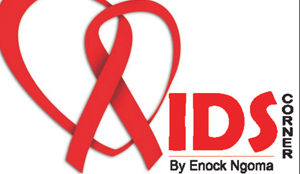 Since HIV surfaced, there have been trials to find a cure to stop the elusive virus that causes AIDS.
Since HIV surfaced, there have been trials to find a cure to stop the elusive virus that causes AIDS.
Earlier studies have shown that Gilead’s Truvada (tenofovir-emtricitabine), which was approved in the US for “pre-exposure prophylaxis” (PrEP) of the AIDS-causing HIV, can reduce risks of infection.
The drug performed well in highly controlled clinical trials that compared its effects to that of a placebo, but some people were concerned about the effectiveness of Truvada when used in a real world setting.
It was not also clear if an increase in the risky behaviour of those who take the HIV prevention pill would offset the benefits of the medication.
Now, two new studies provide evidence that the pill indeed works.
In a study published in Clinical Infectious Diseases, researchers involved 657 people in San Francisco area, most of whom were gay and bisexual men between 20 and 68 years old who took Truvada daily for a period of three years from 2012 and 2015.
During this period, none of the participants had new HIV infection albeit half of them contracted new sexually transmitted infections (STIs). The high incidence of STI suggests that the participants still engaged in high risk practices.
In another study published in The Lancet, researchers focused on gay men and found that those who started on PrEP had significantly fewer new HIV infection compared with their counterparts who waited a year for the pill.
New HIV infection only affected two per 100 people per year in those who used PrEP and nine per 100 people per year in those whose access to the drug was delayed.
The researchers likewise said that two thirds of those on PrEP who were diagnosed with HIV likely had the infection when they began the study.
“The impressive reduction in HIV incidence in people taking PrEP, without a measurable increase in other sexually transmitted infections, is reassuring for clinical, community, and public health stakeholders,” said” Sheena McCormack, from the University College London, who took part in The Lancet study.
Truvada is a combination therapy composed of two medicines in one pill. The drug works by making it harder for the virus to multiply in the body.
Once HIV enters the body, it multiplies inside CD4 cells or T cells that are crucial for fighting infections. The new viruses go into the blood and then infect other CD4 cells.
Truvada works by making it more difficult for HIV-1 to multiply by blocking the enzyme known as reverse transcriptase.
By preventing HIV-1 from spreading, the drug lowers the viral load and decreases the amount of HIV in the blood. Truvada also help increase the number of CD4 cells when it is used alongside another anti-HIV 1 medication.
Since HIV/AIDS was first diagonised among homosexuals, about 25 percent of sexually active gay and bisexual adult men, 20 per cent of injection drug users, and less than 1 percent of sexually active heterosexuals are at high risk for HIV infection, according to the U.S. Centers for Disease Control and Prevention’s Vital Signs report.
People in these groups need to know about Truvada, which is also known as the pre-exposure prophylaxis (PrEP) pill, the government experts said.
Taken daily, the PrEP pill can reduce the risk of sexually acquired HIV by more than 90 per cent. The PrEP pill can reduce injection drug users’ risk of HIV by more than 70 per cent, the experts said.
However, recent data suggests some primary care health providers have never heard of PrEP, which was approved by the US Food and Drug Administration in 2012.
The full potential of the drug to prevent HIV infections can only be achieved by increasing awareness of the drug and providing counseling for those at high risk for HIV, the report stated.
“PrEP isn’t reaching many people who could benefit from it, and many providers remain unaware of its promise,” CDC director Tom Frieden said Tuesday in an agency news release.
“With about 40,000 HIV infections newly diagnosed each year in the US, we need to use all available prevention strategies.”
Dr Jonathan Mermin, director of CDC’s National Center for HIV/AIDS, Viral Hepatitis, STD, and TB Prevention, said in the news release, “PrEP has the potential to dramatically reduce new HIV infections in the nation.”
“However, PrEP only works if patients know about it, have access to it, and take it as prescribed,” he said.
Focused programs can significantly increase the use of PrEP, according to a separate study in Vital Signs.
After the launch of a statewide program to increase PrEP awareness, use of the drug among Medicaid-covered New York State residents rose from about 300 prescriptions filled between July 2013 through June 2014 to more than 1,300 prescriptions filled the following year, the report showed.-






